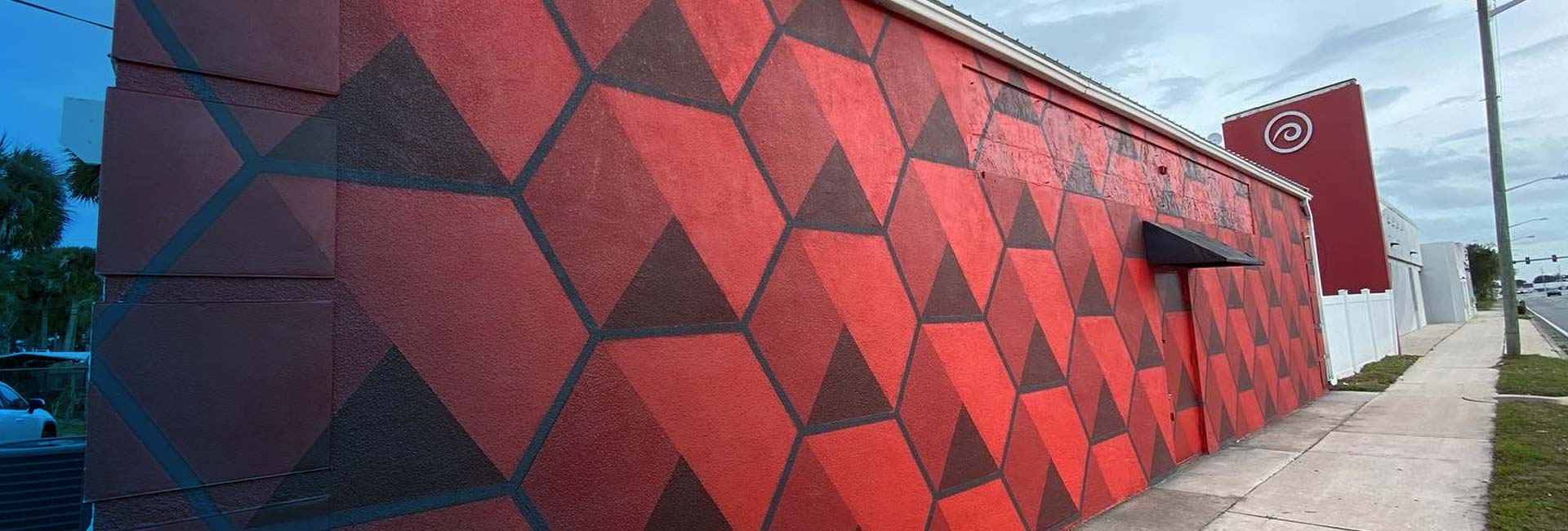It is challenging to write about anything related to artificial intelligence because each time humans begin to grasp its role in our lives, everything changes. Any company hiring a blogger to cover the subject may achieve a more accurate rendering of the truth by using ChatGPT to write and then continually re-write the article.
AI Art became table conversation during the winter 2022 holiday. Almost overnight, our neighbors and grandparents all used new AI tools to post derivatives of themselves as angels, fairies, warriors and superheros on social media. This article aims to navigate the current state of creative mayhem and explore what promise, if any, may be ahead for a more artificially intelligent future.
Founder of the brand agency Lossy, Matt Mayer is a freelance designer who has led high profile interactive design programs at Kennedy Space Center. He prefaces his admiration for new and emerging AI tools by emphasizing that, “it’s not OK for anyone to steal from an artist and profit off of their work without consent and, unfortunately, companies are doing just that.”
Despite a series of unfortunate beginnings, Mayer predicts a bright future for artists and data automation once all legal battles are settled.
“The value of a true artist isn’t going anywhere,” Mayer said. “A tool like Midjourney is just that, it’s a tool and there is a lot of potential for how it can be used responsibly to augment the creative process.”
What appears to be widespread mass adoption is actually the result of many decades of machine learning finally paying off according to Founder of boxMica, Derek Tishler who uses data to deliver SAR intelligence as a service. He said machine learning technology began in the 1960s and adds that, the reason for so few technology advances or what data scientists called an “AI Winter” was due to the fact that the level of computational power required to manage terabytes of data was very limited until now.
“Companies are spending millions to acquire the best data sets and then they’re spending hundreds of thousands of dollars in cloud compute time to train those models,” Tishler said. “We’ve now reached this moment of parody where it is difficult to discern what art originated from a human and what art originated from a machine.”
Tishler said that while it will be interesting to see how companies use these tools at a macro level, it is even more interesting to him to see how artists themselves will adopt these tools at the micro level.
“What we’re about to see could be the difference between an artist falling behind in their craft or a whole company falling behind,” Tishler said. “How artists begin to adopt these tools is the greatest predictor of their future significance.”
Mayer said he believes these tools make it easier for people to create interesting and unique art. While some artists use tools like Pintrist and Behance to inform whole brand identities, Mayer said he now has the ability to gather inspiration from AI sources that are not trend-based.
He said he has tried many different kinds of tools and currently favors Midjourney for its very granular creative concept mapping and DALL-E for its accurate derivatives of photography.
“I see this as an opportunity to explore and experiment,” Mayer said. “It takes nearly a hundred iterations for me to generate anything that may influence a final ancillary brand asset.”
Mayer said there are four ways he is inviting AI tools to inform creative processes at Lossy. He said using these tools is a highly iterative process that requires many hours of individualized machine-artist training.
Ethical ways to use AI tools
Concept Art - AI tools have the unique ability to blend two things which, according to Mayer, is the very definition of creativity. He said the ability to engage in human-like collaboration with a machine as part of the creative process makes the experience more dynamically iterative and adds an element of surprise and wonder.
Worldbuilding - Using AI to worldbuild gives a visual reference for mapping out what some would call the ‘Bible’ or foundational content to support cohesiveness across storytelling mediums. Mayer said, when it's used right, AI tools may help expedite the design process once an illustrator is introduced to the project.
Branding - Today’s models have the ability to be a bit more abstract and fill in environmental gaps for the artist. Mayer said there is still a critical role for the subject-matter expert or creative to clearly define the language, direction, intent, logo mark representation for a brand. The potential for AI rests in the design system or set ancillary materials that convey how that brand is applied.
Both Mayer and Tishler said the greatest concern continues to be intellectual property, copyright, usage, and ownership. They also agree that a future for more immersive and experiential art forms that use AI is as exciting as it is terrifying – while gaming textures and sprites may benefit, the potential for automated propaganda is a real concern. Tishler said the best way to stay up-to-date on what is happening within the global data news is to follow the research institutions responsible for generating these massive data sets at groups like Open AI, Google AI, NVIDIA, DeepMind, and Facebook AI.
Jenna Reid is a communications specialist and the co-founder of Groundswell, a high tech incubator in Space Coast, FL. She enjoys sailing with her daughter and husband on the Indian River Lagoon. Follow her on YouTube and Spotify @msjennareid


